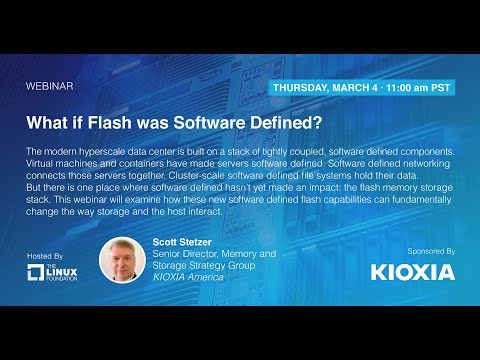Description:
Explore the potential of software-defined flash memory in modern hyperscale data centers during this 48-minute Linux Foundation webinar. Delve into the evolution of data storage, from HDDs to SSDs, and examine how software-defined capabilities can revolutionize the flash memory storage stack. Learn about industry challenges, benefits, and the concept of Software Enabled Flash. Discover how hardware and software can work together, along with programming capabilities. Understand the deployment of different protocols, latency management techniques, queue modes, and methods for offloading host resources. Gain insights into open-source initiatives, including Linux projects, and explore topics such as RoxDB, PCIe generation abstraction, flash emulation, and NVMe over Fabric. Engage with anonymous questions and expand your knowledge of cutting-edge storage technologies.

What If Flash Was Software Defined - Revolutionizing Data Storage
Add to list
#Programming
#Cloud Computing
#Software-Defined Storage
#Computer Science
#Information Technology
#Linux
#Computer Hardware
#Flash Memory
#Data Centers
#Software Development
#Open Source
#PCIE
#NVMe
#Hyperscale Computing